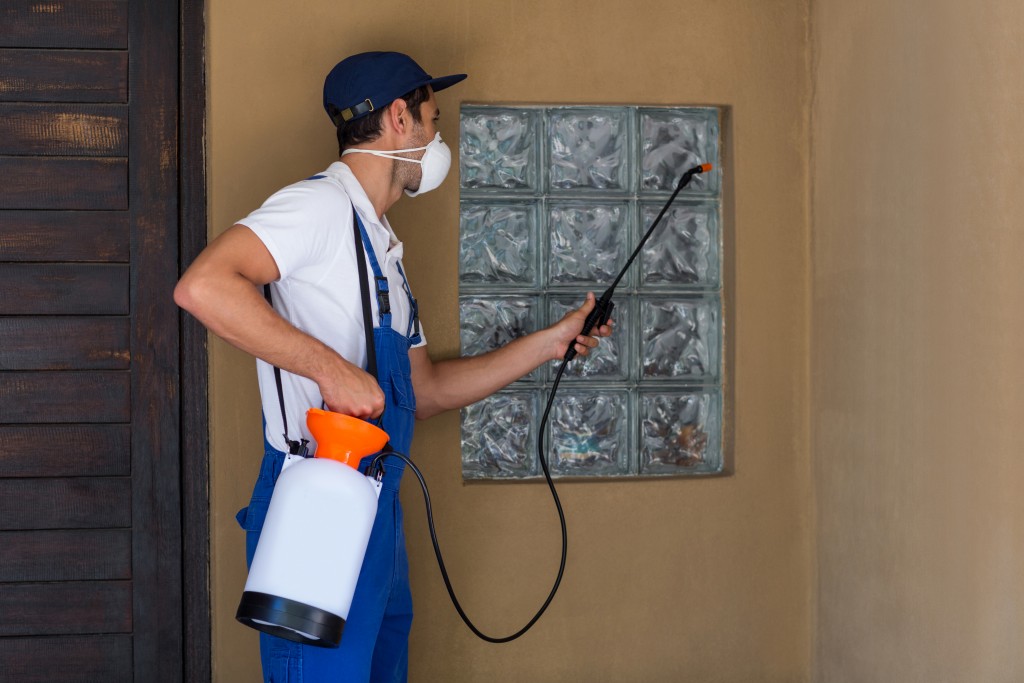The pest control technology is continuing to evolve as the industry comes up with more and more innovations to prevent and control pests. Along with increasing the effectiveness of pest control techniques, modern pest control technology aims to reduce the impacts of its methods on the environment and non-target creatures.
In this article, let’s talk about some of the most recent innovations in pest control technology and their benefits on the industry, its consumers, and the environment:
Non-toxic heat treatment
The use of heat in pest control, such as in termite treatment, is done to dehydrate the pesky insects and interrupt their physiological processes—but without affecting the physical structure that it is used on. Unlike older methods that use toxic sprays, heat treatment does not emit chemical substances that can be harmful to human health. Moreover, non-toxic heat treatment uses infrared rays that go through surfaces and kill any insects that may be hiding underneath, regardless of their growth stage, which is undoubtedly more effective than older techniques.
Bio-rational materials
Bio-rational materials are pest control products that have minimal impact on the environment and are relatively non-toxic. Its innovation and usage in pest control help the industry become more sustainable, which is a growing trend among private facilities and commercial pest control companies alike. In the future, we can expect a more widespread of bio-rational materials as the members of the industry embrace the importance of environmental sustainability and conservation even further, which is a crucial step as the threat of climate change continues to loom over the Earth.
Canine pest control
It seems like Fido has another trick up his sleeve aside from sniffing out bombs, guns, and drugs. With their unique sense of smell, dogs can be trained to sniff out bug infestations, too, such as termites and bed bugs. And unlike humans, dogs can detect live bugs and eggs with outstanding accuracy, helping pest control specialists to find and isolate the problem area much more efficiently.
Canine pest control requires adequate training, similar to bomb or narcotics detection. For commercial pest control companies that wish to use dogs as high-accuracy bug detectors, they can either hire a professional trainer to train the dog to detect specific insect odors or train the dog on their own. Whatever the case, it requires a lot of time and patience for the dog to achieve a high accuracy level.
Birth control
Birth control is a more innovative pest control technology that reduces the need for pesticides, which contains chemicals that can be harmful to humans and the environment. For birds, rats, and other rodents, birth control is combined with bait, which is placed in areas with pest problems and is suffering from significant amounts of damage from the infestations. Unlike pesticides, birth control sterilizes the animal instead of killing them, which lowers their reproduction rates and effectively reduces their populations.
For insects, radiation is used to sterilize larvae before they are released. This technique allows them to fully mature, maintaining the ecological balance in nature but prevents them from reproducing.
Drones

Now that drone technology has become relatively cheaper and more accessible, pest control professionals use drones to survey areas that are difficult to access. Aside from being a faster way to check for pest infestations, using drones in pest control is safer and easier to conduct.
Thermal imaging technology
Although thermal imaging technology has been around for quite some time now, its pest control application is relatively new. Thermal imaging technology uses heat detection to detect the sources of pests, which allows pest control professionals to find the infestation even if it is hidden behind surfaces. As a result, finding and isolating the problem is easier and faster. It does not require pest control professionals to dismantle walls or floorboards to find the sources of pests.
Fly baits
Fly baits are simple yet useful tools in controlling the population of flies in a particular area. Modern fly baits consist of a sticker panel that contains food particles and insecticide, which makes it effective in both attracting and killing pests at the same time. Moreover, it is quick to take effect, killing flies in less than a minute upon contact with the trap.
When placed indoors, fly baits can last up to seven months. They can also be useful in outdoor settings, such as near trash cans, food receiving areas, drains, and other places where flies tend to gather.
The future of pest control is expected to be more effective, efficient, and environmentally-friendly. With these innovations in mind, we can look forward to more improvements in the industry as it continues to evolve and adapt to continuously changing circumstances.

